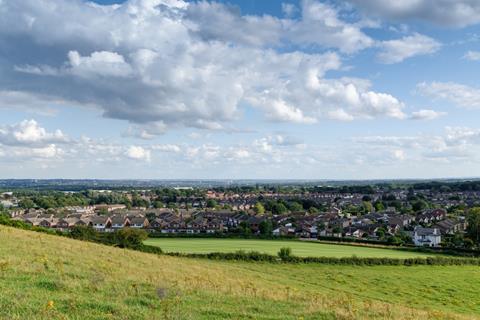Study by CPRE finds sprawl being put on green belt sites released for building

Homes on green belt sites are being built at less than half the density of other sites, according to the latest analysis by countryside lobby group the Campaign to Protect Rural England.
In its regular state of the green belt report, released today, the body said that the average density of development was just 14 homes per hectare, compared with 31 homes per hectare on schemes outside the green belt, and that “low-density development in the green belt is failing to make the best use of land.”
In addition, the CPRE report found that adopted and emerging local plans proposed building more than a quarter of a million homes on existing green-belt land.
Despite the fact the government’s National Planning Policy Framework includes strong protection for green-belt land, the requirement for local authorities to meet the calculated housing need in their areas is causing many to consider releasing green belt land for development.
A number of bodies, including the Adam Smith Institute, have called for a relaxation of green-belt rules in order to meet the housing crisis. The study found 266,000 homes were planned for green-belt sites in local plans.
It said it found that just 16% of the more than 5,000 homes built on green-belt-designated land or sites removed from the green belt in the past four years, only around 800 were affordable.
While the CPRE said it did not know the equivalent figure for non green-belt-schemes, this compares to an average requirement in local authority policies that 34% of new homes be affordable.
Tom Fyans, Deputy Chief Executive of CPRE, the countryside charity, said the country was reaching a “tipping point” over the green belt. “The number of new homes proposed on the green belt has continued to rise since the report was first undertaken in 2012, despite the fact that these homes are not delivering promised affordable housing,” he said.
However, government statistics show that the green belt currently covers more land in England than is under development, 1.6m hectares, and that the amount has fallen by just 0.6% in the five years from 2013/14 to date.










No comments yet